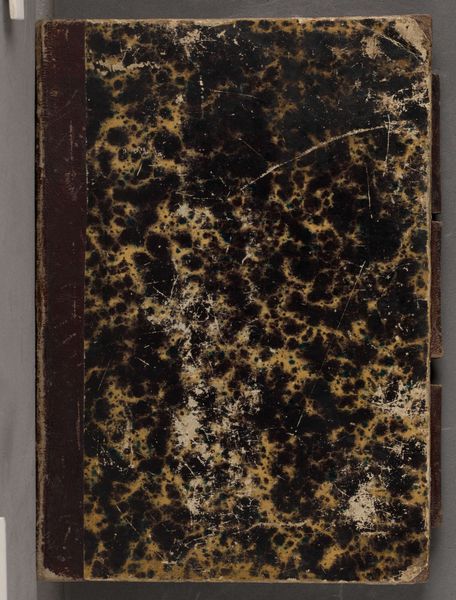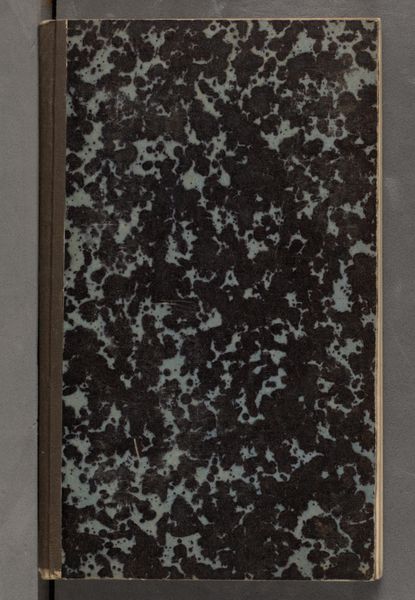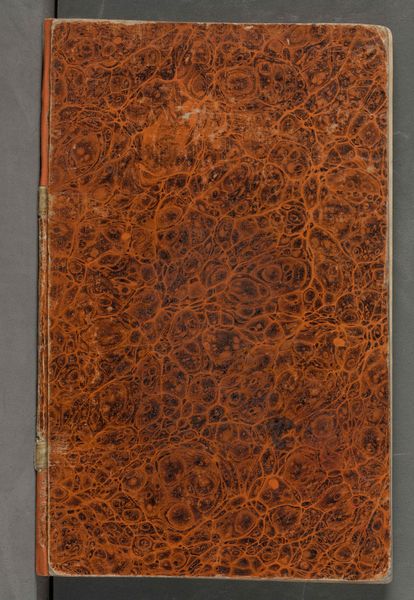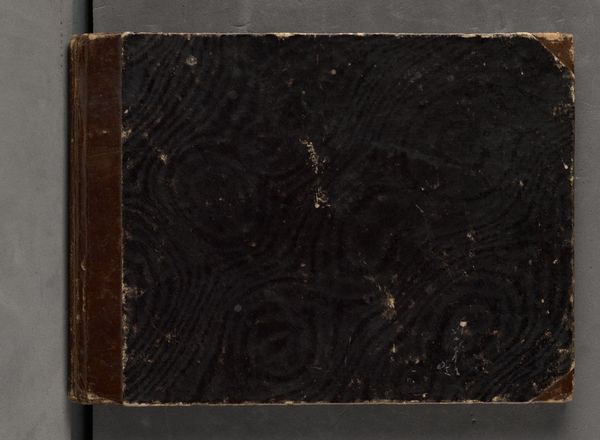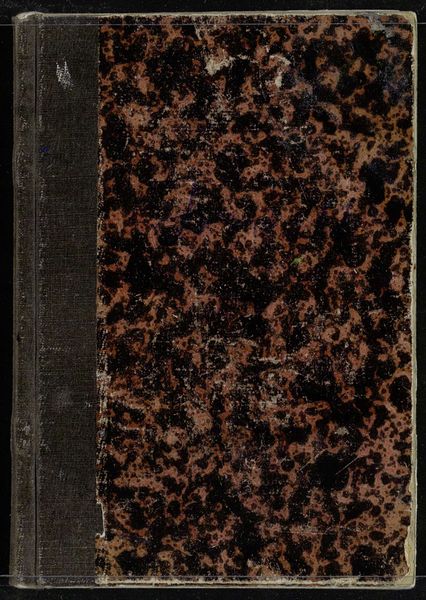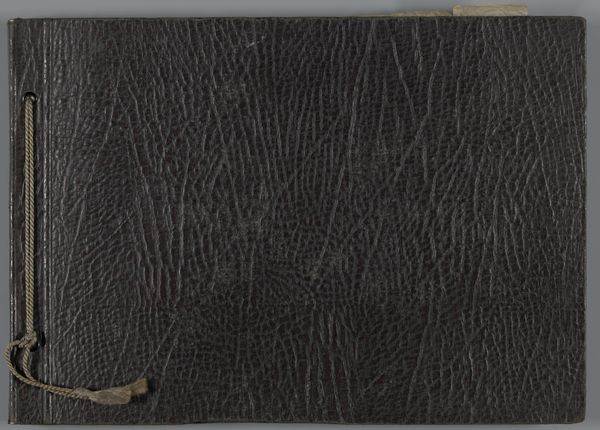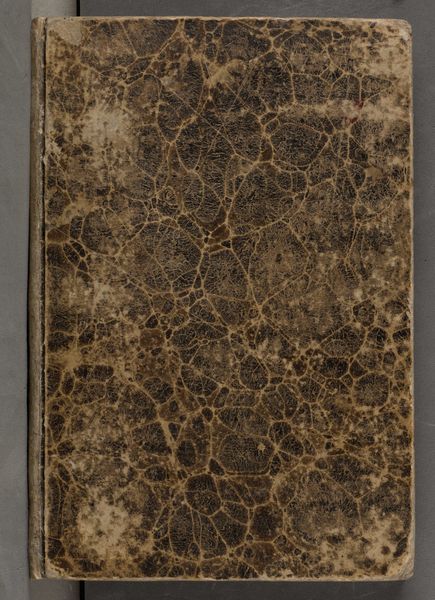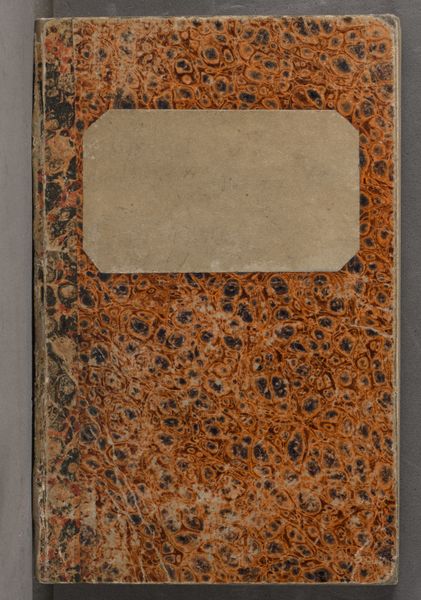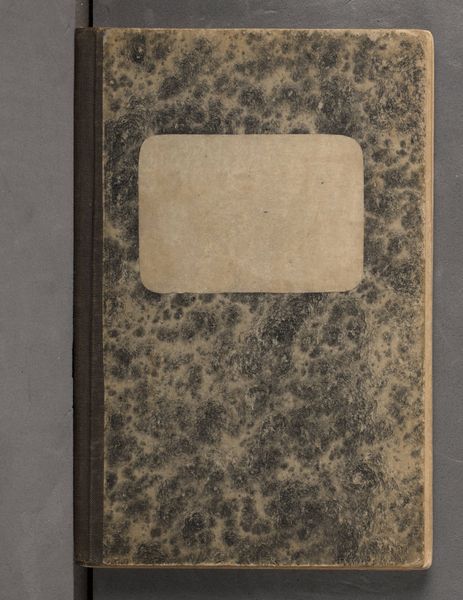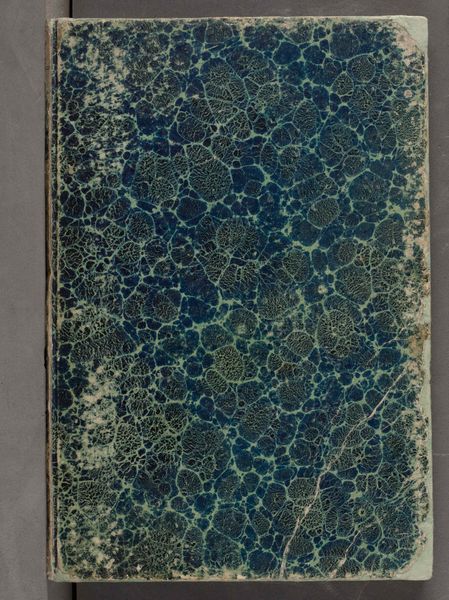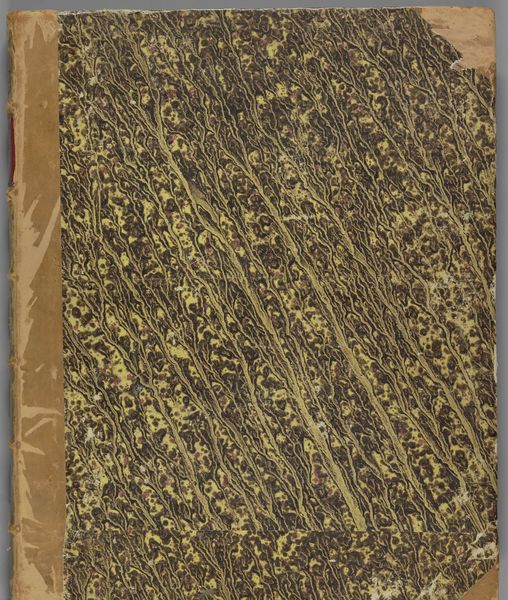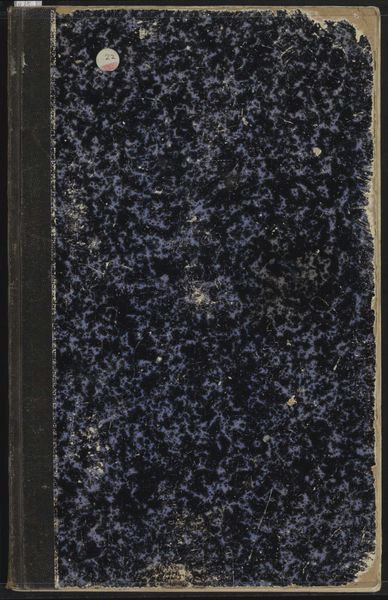
drawing, graphic-art, mixed-media, paper
#
drawing
#
graphic-art
#
mixed-media
#
16_19th-century
#
book
#
sculpture
#
paper
#
design on paper
Copyright: Public Domain
Editor: Here we have Ludwig Metz's "Skizzenbuch" from 1852, a mixed media drawing and graphic art piece held at the Städel Museum. It looks like the cover of a sketchbook. What grabs me is the textural quality, the way the patterned cover almost resembles wood grain, even though it's textile. How would you interpret this, looking at it from your perspective? Curator: Well, this "Skizzenbuch" interests me particularly for what it represents in terms of artistic labour and process. It is not just about the design "on paper," but also about what this book *is.* Consider the making involved: the production of the paper, the binding techniques, and the materials used for the cover’s design – possibly involving printing or weaving techniques. This book represents a confluence of different skills, which often go unacknowledged when we think of the singular "artist." How does considering the multiple hands involved shift our perception of Metz's individual creativity? Editor: That’s fascinating! I hadn’t thought about the collaborative aspect embedded within what seems like a solitary artist's sketchbook. So, instead of just seeing the contents – the sketches – as Metz's creation, we see the entire object, with its varied inputs, as part of his creative process. Curator: Precisely! We tend to prioritize the artist's intention, but what about the social context of production? Where were these materials sourced? Who manufactured them? This is crucial for understanding art within a larger economic and social system. Can we truly understand Metz's work without acknowledging these unseen collaborators and the networks of labor involved in its creation? Editor: I see your point. By examining the materials and their production, we can broaden our understanding of the artist's world. It definitely moves beyond just aesthetic appreciation. Thanks, that gives me a lot to think about regarding how we define "art" and an artist's creation. Curator: My pleasure. Examining the materiality often unveils layers of meaning overlooked by traditional art history, allowing a richer, more comprehensive understanding of any artwork.
Comments
No comments
Be the first to comment and join the conversation on the ultimate creative platform.
